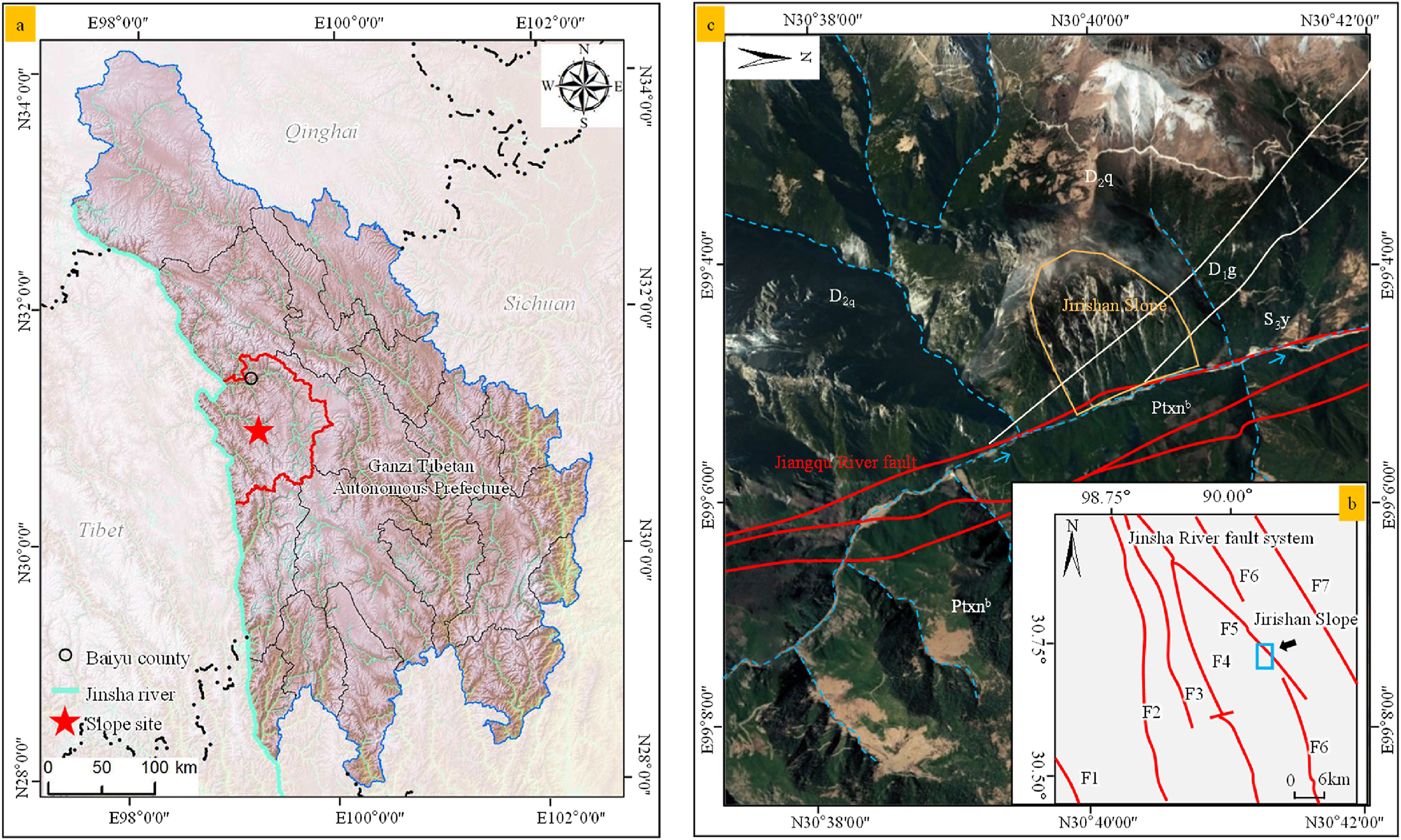JRMGE / Vol 16 / Issue 3
A process-oriented approach for identifying potential landslides considering time-dependent behaviors beyond geomorphological features
Xiang Sun, Guoqing Chen, Xing Yang, Zhengxuan Xu, Jingxi Yang, Zhiheng Lin, Yunpeng Liu
Show More
a State Key Laboratory of Geohazard Prevention and Geoenvironment Protection, Chengdu University of Technology, Chengdu, 610059, China
b China Railway Eryuan Engineering Group Co. Ltd., Chengdu, 610031, China
c Power China Chengdu Engineering Co. Ltd., Chengdu, 610072, China
2024, 16(3): 961-978. doi:10.1016/j.jrmge.2023.05.014
Received: 2023-01-16 / Revised: 2023-03-14 / Accepted: 2023-05-15 / Available online: 2023-08-06
2024, 16(3): 961-978.
doi:10.1016/j.jrmge.2023.05.014
Received: 2023-01-16
Revised: 2023-03-14
Accepted: 2023-05-15
Available online: 2023-08-06
Geomorphological features are commonly used to identify potential landslides. Nevertheless, overemphasis on these features could lead to misjudgment. This research proposes a process-oriented approach for potential landslide identification that considers time-dependent behaviors. The method integrates comprehensive remote sensing and geological analysis to qualitatively assess slope stability, and employs numerical analysis to quantitatively calculate aging stability. Specifically, a time-dependent stability calculation method for anticlinal slopes is developed and implemented in discrete element software, incorporating time-dependent mechanical and strength reduction calculations. By considering the time-dependent evolution of slopes, this method highlights the importance of both geomorphological features and time-dependent behaviors in landslide identification. This method has been applied to the Jiarishan slope (JRS) on the Qinghai-Tibet Plateau as a case study. The results show that the JRS, despite having landslide geomorphology, is a stable slope, highlighting the risk of misjudgment when relying solely on geomorphological features. This work provides insights into the geomorphological characterization and evolution history of the JRS and offers valuable guidance for studying slopes with similar landslide geomorphology. Furthermore, the process-oriented method incorporating time-dependent evolution provides a means to evaluate potential landslides, reducing misjudgment due to excessive reliance on geomorphological features.
Keywords: Geomorphological features, Evolution history, Time-dependent stability calculation, Landslides identification, Qinghai-Tibet Plateau
Show Figure(s)
Share and Cite
Xiang Sun, Guoqing Chen, Xing Yang, Zhengxuan Xu, Jingxi Yang, Zhiheng Lin, Yunpeng Liu, 2024. A process-oriented approach for identifying potential landslides considering time-dependent behaviors beyond geomorphological features. J. Rock Mech. Geotech. Eng. 16 (3), 961-978.
Article Data
Author(s) Information
Guoqing Chen

Guoqing Chen, Professor, received his PhD from Institute of Rock and Soil Mechanics, Chinese Academy of Sciences in 2009. He conducted research on the stability of rocky slopes at the Postdoctoral Station of Geological Resources and Geological Engineering of Chengdu University of Technology from 2010 to 2015. He received the Sichuan Provincial Outstanding Youth Fund in 2014, and was selected as the reserve candidate of Academic and Technical Leaders of Sichuan Province in the same year. He was promoted to a professor in 2015, and received the Gu Dezhen Youth Science and Technology Award in 2016. His main research interests include: (1) Testing technology of laboratory large-scale rock samples and physical models; (2) Time-dependent deformation failure of large rocky slopes and landslide prevention and control; and (3) Prevention and control of high-stress deep-engineering hazards. His major research achievements include: (1) Pioneering the theory of heterogeneous rheological failure of geotechnical bodies; (2) Proposing the dynamic strength reduction method for progressive slope failure; (3) Developing the geomechanical theory of locked segments of rocky slopes; and (4) Optimizing the catastrophic mechanism of geotechnical bodies in the extreme geological environment of the Qinghai-Tibet Plateau.

